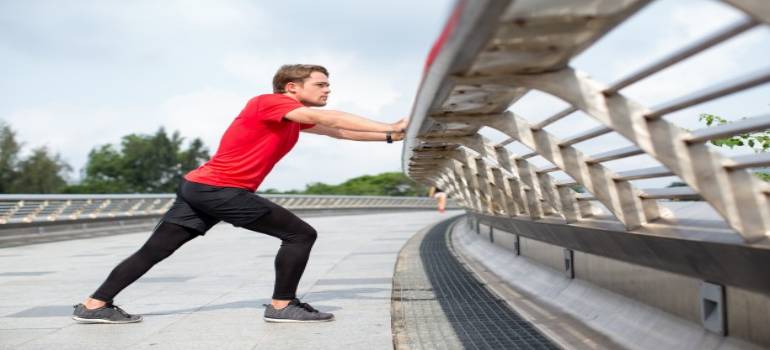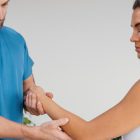When discussing injuries in running, our hips, and core tend to attract people’s attention, but our calves are responsible for a lot of work in running. Nowadays, calf tightness is one of the most common complaints in runners. Calf muscles are made up of two different muscles, i.,e, the gastrocnemius and the soleus which are the natural shock absorber of our body. During running, every time while landing and push-off phase these muscles handle eight times our body weight.
Causes of calf tightness
- Muscle Cramp: Cramps are a typical cause of tight calf muscles. Cramps are places where muscles contract suddenly and involuntarily without relaxation. Dehydration, lack of stretching, sustained physical activity, electrolyte loss through sweating are the possible reasons for cramps.
- Overuse: Excessive use of calf muscles can cause tightness. Runners who exercise regularly are at risk of overusing calf muscles. Running with tight calves can cause more serious injuries.
- Muscle strain: Straining of the calf can cause tightness, pain and swelling in the back of the calf. Excessive strenuous exercise will cause the calf muscles to contract and suddenly stretch, which can cause calf strain. In severe cases, the same movement may cause the calf muscle to tear.
- Other contributing factors that may cause runners to experience recurrent calf tightness include:
- Cadence (Poor stride running technique)
- Excessive load on the muscle due to runner’s frame or body weight
- A poor fitting of shoes and/or an inadequately supported arch of foot
- Poor strength of core and hip muscles
Tight calves may be difficult to touch. The muscles may twitch slightly or feel warm due to inflammation. They may feel pain, especially when under pressure.
Treatment
In most cases, medical treatment for tight calf muscles is not necessary.
Muscle cramps usually go away on their own. They can last anywhere from a few seconds to 15 minutes or longer. It may be beneficial to stretch and exercise the calves more frequently if you experience frequent cramping. Take a break from any activity that may cause the calf muscles to strain if overuse is causing the tight calves. Unless the overuse causes an injury, treatment is not required. The RICE method — rest, ice, compression, and elevation — will help you recover from a strain. Pain relievers sold over the counter can also help.
Tips to prevent calf muscle tightness!!
1.Warm /Cool down
A slow and uniform warmup is essential to avoid muscle tightness as you begin to upsurge the pace. Walk for a few minutes, before running and do lunges (focus on the back leg for a deeper stretch of calf) and gentle toe hops.
Allow your body to cool down for a few minutes after each run by walking and stretching. Foam wedge could be your new best friend if you use a standing desk. To get a good calf stretch, use it while standing.
2.Stretching exercises
- Staircase stretch: Stand on the step with heal hanging back over the edge. Relax your feet and slowly rise on your toes then lower. The lower you go the more you get the stretch. Hold the position for 30 sec.

- Runner Stretch: Stand 12 inches away from wall, facing it. Extend one leg behind you, keeping your back knee straight and both feet flat on the floor. Lean against the wall until you feel tension in your extended leg’s calf muscle. Hold the position for up to 30 sec. Repeat the same with the other leg.

- Towel calf stretch: If you can’t reach your feet with your hands, the towel calf stretch is a great way to stretch your calf muscles. Sit with your legs out in front of you on floor. Wrap a towel or a strap around one foot’s ball. Pull the towel gently up and off the floor, allowing your toes and ankles to flex. For 30 sec, hold the stretch. Repeat the same.

3.Strengthening exercises
- Calf raises: For balance, stand close to a wall. To protect your joints, stand with your feet hip-width apart and your ankles, knees, and hips vertically aligned. To raise your body, press down into the balls of both feet. Instead of shifting your body forward or backward, keep your abdominal muscles pulled in and move straight upward. Repeat for 10 times. Progress from double leg calf raises to single leg calf raises.

- Seated toe raises: Place both feet on the ground and sit in a chair. Raise your heels off the ground by pressing down through your toes. Hold the position for ten seconds before lowering it. Repeat for 10 times.

- Resisted band calf exercise: Wrap the band around your foot’s end and press down into it, extending your toes and engaging your calf. Hold for three seconds before slowly returning to the starting position. Repeat for 10 times. Do the same with other leg.








